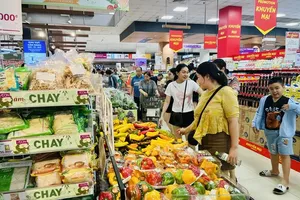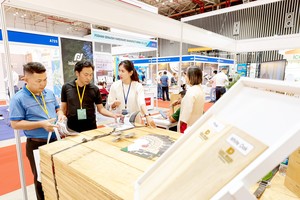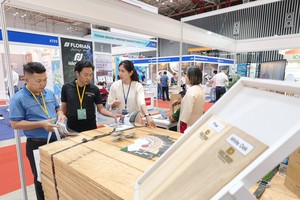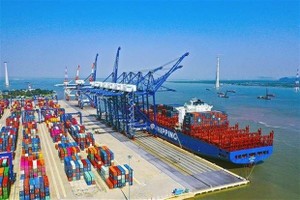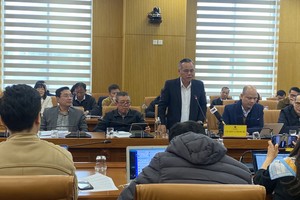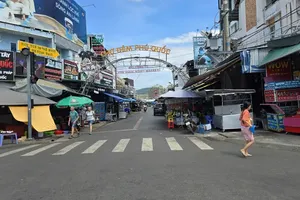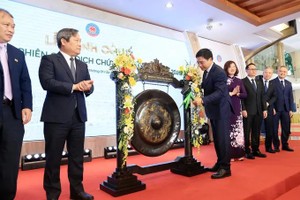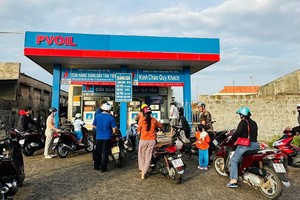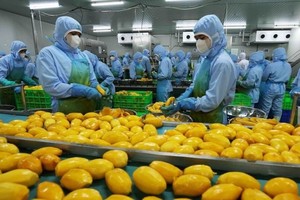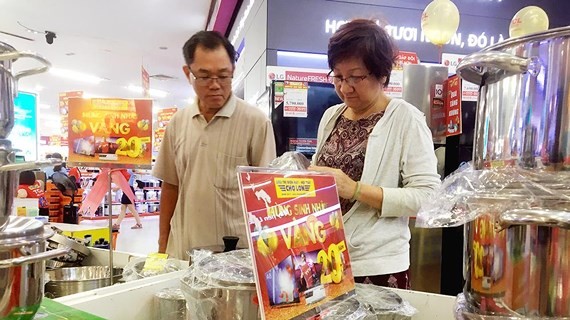
In the announcement released on June 21 relating to the fact that Asanzo Group has been selling several household appliances labelled ‘made-in-Vietnam’ but actually originated from China and were recognized as Vietnamese high quality goods, Mrs. Vu Kim Hanh, chairwoman of the High Quality Vietnamese Product Business Association, apologized consumers and other true enterprises for this mistake. The act of importing Chinese products then labelling as Vietnamese ones has seriously hurt the confidence of Vietnamese consumers in Vietnamese products and caused bad impact on the prestige of the high-quality Vietnamese product program.
Many products of Asanzo were displayed at various electronic supermarkets and electronic stores across the country. However, after the origin of Asanzo’s products was uncovered, its products have been no longer displayed or sold at those places. Many electronics centers including Nguyen Kim and Dien May Xanh announced that products of Asanzo were ‘out-of-stock’ or ‘no longer sold’.
However, at the present, not only have products of Asanzo been cheating Vietnamese consumers but there are also lots of products labelled as ‘made-in-Vietnam’ products but actually were made in China at low cost price with poor quality. These products, then, were slipped into Vietnamese market to evade import tax and trick consumers.
For years, many Vietnamese products have enjoyed the advantage when consumers return to support high-quality Vietnamese goods and boycott cheap, low quality goods smuggled from China. The campaign to encourage Vietnamese people to prioritize using Vietnamese goods is not only an appeal but many products made by Vietnamese firms have won the confidence of consumers. However, the situation that many products labelled ‘made-in-Vietnam’ but actually made in China then slipped into Vietnam’s market via illegal and even official import.
Lung Vai market in China is considered as a ‘general depot’ of cheap and low quality consumer goods that usually supplies goods for some Vietnamese firms. The market has hundreds of shops and kiosks located next to each other. Every kiosk is filled with goods at surprisingly low prices. According to a shop owner, he can supply as many batches of clothes as ordered. If customers want clothing labels of Thai, Korean or Vietnamese brands, whatever brands, they just need to deposit 50 percent of total value of the consignment. Another shop owner said that customers do not have to worry about transport. Clothes will be packed and delivered to Vietnam by a transport team. The shipping cost is calculated by weight. The consignment will be delivered in Lang Son Province or in Hanoi as requested.
What caught our attention is that they can make ‘made-in-Vietnam’ labels in China then attach them on cheap and low quality products manufactured in China which then are transported to Vietnam to sell. The owner of a firm in Hanoi revealed that at the present, many firms hire Chinese companies to process and print labels and tags to provide their customers because the cost of processing in China is half of that in Vietnam. In addition, Chinese companies already have technology and machinery so the quality of counterfeit labels and tags is not different from the authentic ones. There are firms even hiring factories in China to mainly process their products to reduce cost prices.
Currently, industrial products and building materials also experienced the same situation of being labelled as ‘made-in-Vietnam’ but actually originating from China.
Mr. Tran Huu Linh, head of the Market Surveillance Agency under the Ministry of Industry and Trade, said that fake labelling is currently from two sources: firms order Chinese factories to manufacture products for them then smuggle into domestic market via trails and firms make fake products domestically.
As for counterfeit products that are made and sold in domestic market, Mr. Linh said that the agency has been intensifying inspection but it requires close cooperation of the firm whose products are being counterfeited. He cited that market surveillance officers lately seized more than 3,000 counterfeit watches of various famous brands and the case was uncovered because these foreign watchmakers reported to market surveillance authority. Other cases were disclosed thanks to collaboration of firms.
As for the situation that products are counterfeited in foreign countries, Mr. Linh said that the agency usually cooperates with relevant authorities, such as border guard and customs which are the main forces in anti-smuggling and anti-counterfeiting at border gates.
‘When fake, smuggled and low quality products enter domestic market, market surveillance authority will increase inspection and punishment. However, market surveillance department is only one of the units which deal with origin fraud,’ said Mr. Linh.
According to Mr. Tran Thanh Hai, deputy head of the Agency of Foreign Trade under the Ministry of Industry and Trade, origin fraud is not only for reducing cost prices and increasing profits but also for receiving preferential tax when exporting to other countries. The ministry has ordered Vietnamese export firms to follow regulations about origin certificate and not to abet origin fraud act.
Recently, several steel products of Vietnam were involved in misfortune because of Chinese steel products as the EU decided to launch safeguards investigation against Vietnamese steel products on suspicion that they originate from China. Meanwhile, the US used to imposed extremely high anti-dumping tax rate on Vietnamese steel products.
